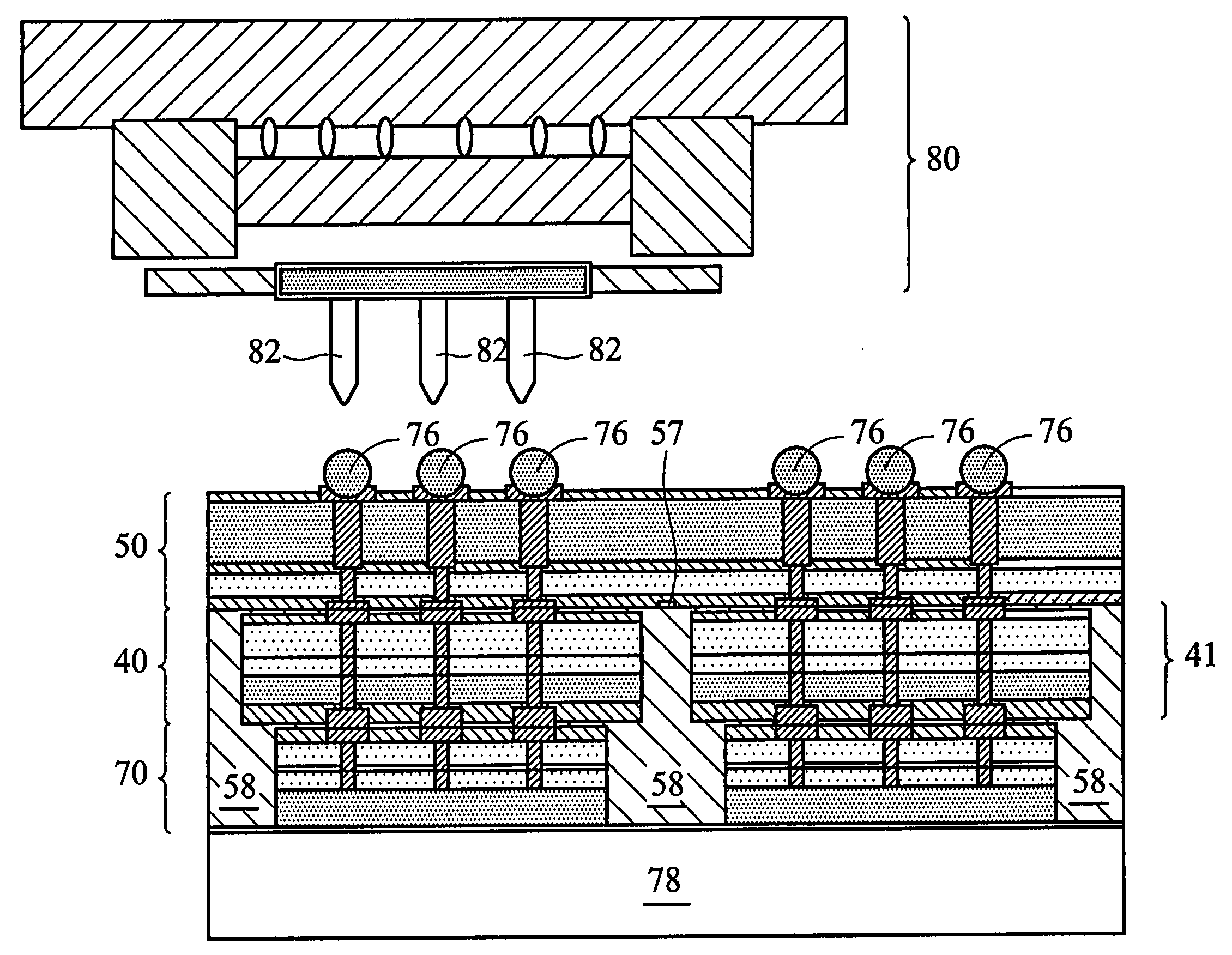Chip-probing and bumping solutions for stacked dies having through-silicon vias
a technology of throughsilicon vias and stacked dies, which is applied in the field of integrated circuits, can solve the problems of reducing the size of the minimum required to make these components, physical limits of the density that can be achieved in two dimensions, and requiring more complex designs
- Summary
- Abstract
- Description
- Claims
- Application Information
AI Technical Summary
Benefits of technology
Problems solved by technology
Method used
Image
Examples
Embodiment Construction
[0020]The making and using of the presently preferred embodiments are discussed in detail below. It should be appreciated, however, that the present invention provides many applicable inventive concepts that can be embodied in a wide variety of specific contexts. The specific embodiments discussed are merely illustrative of specific ways to make and use the invention, and do not limit the scope of the invention.
[0021]The cross-sectional views of intermediate stages for forming a three-dimensional integrated circuit (3D IC) are illustrated in FIGS. 3 through 12 and discussed. The variations of the preferred embodiments are then discussed. Throughout the various views and illustrative embodiments of the present invention, like reference numbers are used to designate like elements.
[0022]FIG. 3 illustrates die 40, which will be bonded to a semiconductor wafer. Die 40 includes semiconductor substrate 43, wherein integrated circuits (not shown) are formed at surface 401 of substrate 43. S...
PUM
 Login to View More
Login to View More Abstract
Description
Claims
Application Information
 Login to View More
Login to View More - R&D
- Intellectual Property
- Life Sciences
- Materials
- Tech Scout
- Unparalleled Data Quality
- Higher Quality Content
- 60% Fewer Hallucinations
Browse by: Latest US Patents, China's latest patents, Technical Efficacy Thesaurus, Application Domain, Technology Topic, Popular Technical Reports.
© 2025 PatSnap. All rights reserved.Legal|Privacy policy|Modern Slavery Act Transparency Statement|Sitemap|About US| Contact US: help@patsnap.com



